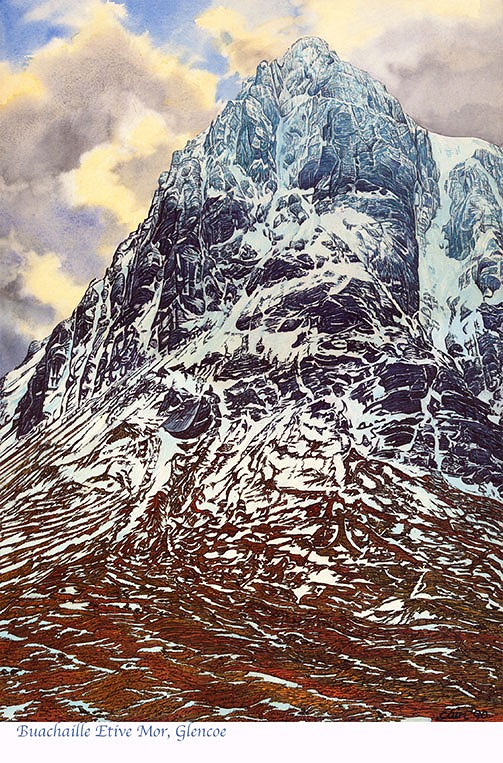
From his website www.mountainart.co.uk:
Anthony 'Ginger' Cain was born in Liverpool. He spent school years in the Lake District where he started climbing, which turned into a lifelong obsession. He also studied geology which is reflected in the rock structures of his paintings. He has lived in Canada, Wales and the Scottish Highlands before moving back to Llanberis in Wales where he now lives.
A serious interest in painting began during a summer job in a fire lookout at Bow Summit in Banff National Park, Canada in 1959. This led to a two-year spell in a training college as a mature student, with Art as a main subject on returning to the UK in 1962. A brief teaching job and he decided it was not for him and in 1965 with his wife Vera and son Nial, they moved out to Wales to a derelict farmhouse above Deiniolen. The first few years were hard going, working on the house, trying to get established as a painter and also working as a mountain guide. At first the paintings tended to be large in oil or acrylic and of abstract appearance based on geological structures with colours based on musical scales. Gradually they tended towards realism and a number of watercolours were done of mountain scenes, which with a climber's eye dictating them said something to fellow climbers in their own language. Some paintings turned out to be popular - after repeating three different versions of Stac an Armin, St. Kilda he decided to get it reproduced as an edition of prints in 1978. As these sold well, Ben Eighe was done the following year and subsequent prints followed.
A selection of paintings appear at the base of this article. All of Ginger's paintings appear on his website: www.mountainart.co.uk.
This essay was first published in Extreme Rock and is re-produced with the kind permission of Ken Wilson. A facsimile edition of Extreme Rock will soon be available - watch this space.
Sgurr a'Mhadaidh, Isle of Skye
Thor (E2 5c, 240m) - FA 1967 - A Cain and C Boulton
The First Ascent of Thor, by Ginger Cain:
One day in the fifties, I was descending below Foxes' Rake on Mhadaidh when I became concious of the profile of the rock to the right of Slanting Gully. It was impressive, a vast band of overhangs that at the time spelled out the last word in inaccessibility. Nevertheless I did go back a few years later and climbed up to the traverse line below the big overhangs, and went for another look again about 1963 with 'Big Elly' Moriarty. It was Robin Smith, in those few golden years, who first prospected the steeper rock of the corrie, producing Thunder Rib in 1960. I gained the impression from Elly that he was certainly familiar with that section of the cliff, and that other Scots lads had been sniffing around on it. Time past and still no-one had done it, although Joe Brown had been for a 'look' - I believe he left the ring peg in the crux pitch. So one day in the spring of 1967 I mentioned to Chris that I knew of a very big route waiting to be done.
As neither of us were encumbered by regular employment, we were very shortly heading north at the maximum rate allowed by a Renault 4 van. We were quite confident about the route, as didn't we now have some of the new chrome-molly pegs which made everything possible? Arriving on Skye we had a stroke of luck - it had been dry for several weeks and conditions were ideal.
I led the first pitch, a dyke line, until a stance could be taken on the left. Chris came though and led up to the easy traverse line below the lower overhangs. I went up right to a good ledge with an old belay peg - we added one of ours to it.
From now on we were heading in to the unknown. The next pitch looked hard - a steep wall led up to the upper overhangs, below which it appeared to form a gangway. There was a possibility of further leftward progress for some distance to a narrowing in the roof where a corner and dyke crossed it, the probable crux. It was Chris's turn to undergo stress and frayed nerves on this pitch.
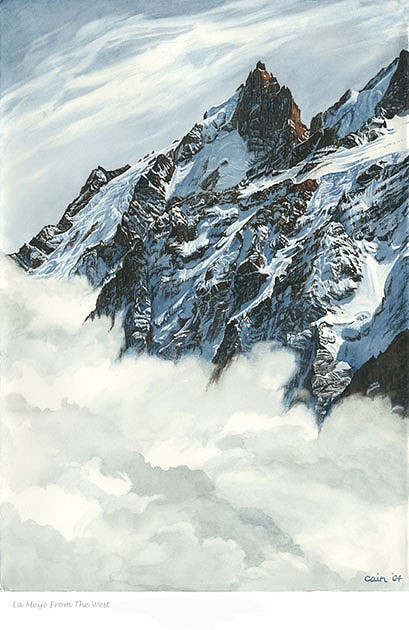
Moving up from the stance on to the wall brought instant commitment. It was steep and fingery from the first, and overhanging beneath to give a frisson of exposure. I thought it hard enough, with the little mantleshelf especially tricky. Funny, Chris didn't pause or seem at all harassed here. I should have become suspicious by now that he was not climbing in his usual (not particularly brilliant) style, but had, as it were, art a stroke, moved up the league table from bottom of the second division to near the top of the first. He was like the family tourer after fitting it with a turbocharger and a five-speed gearbox.
The impression was reinforced when I moved along the gangway and arrived at the crux proper. Perched on the diminishing end of the ramp, a leaning corner disappeared down to the left, its overhanging far wall formed by a basalt dyke which must be crossed to arrive at a slabby perch on its far side. the basalt, in its fashion, was faceted with little angles, none of which to my mind seemed either deep enough or angled correctly to satisfy my need for a jug to launch across that void. Chris's promptness had deluded me into thinking it must be easier than I found it, and that I had overlooked a jug somewhere. I spent some time establishing certain absence of the hidden jug before warning Chris of my imminent launch across or into the void. It is always wise to assure oneself of the state of readiness of one's partner on the rope when the partner is out of view - there is a scope for research into the activities indulged in by bored belayers when out of sight on isolated stances.
Then, somehow, I was across on to the perch above the dyke, concious only of a great deal of fresh air below my tightening sphincter. Strenuously a steep corner took me up to Chris's stance where the angle relaxed to the vertical. His weaselly features puckered into what for him passes for a smile:
"What about that then?"
It was all over, we had cracked it. The climbing continued on superb rock up into the big corner of Shining Cleft. We carried on, alternating leads, until overhangs at the top of the corner forced us to take the easier option and traverse out on to the right arete and so up to Foxes' Rake.
Our only problem now was in naming the route. At that time the corrie was called Tairneilear - 'The Thunderer' - appropriately. Doubters should go there when a southerly gale is whipping over the ridge of Thuilm, rendering in sound the tearing and booming of thunderclaps. I am convinced it should still be so called, though the bureaucrats have prevailed and the corrie has now been given the name of the peak under which it stands, and its own name transferred to the tame northern branch of Coire na Creiche. On our jubilant walk back down the corrie we arrived at the name 'Thor', and so we wrote it up in the Glen Brittle hut book.

© Mountain Art - Llanberis |
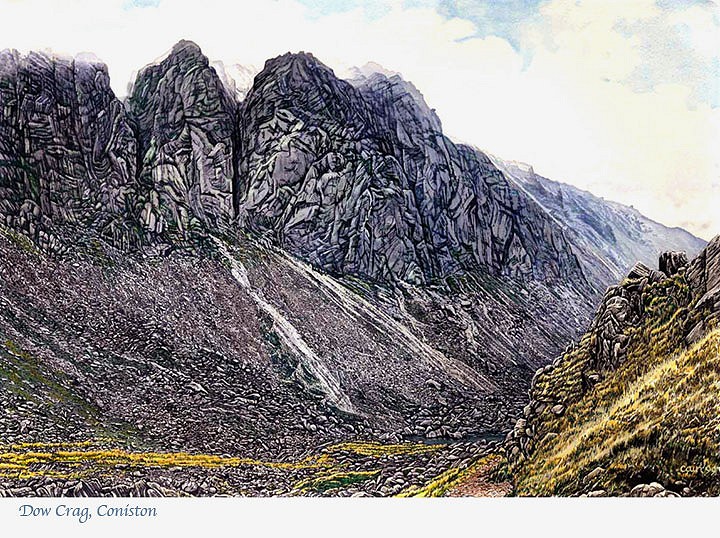
© Mountain Art - Llanberis |
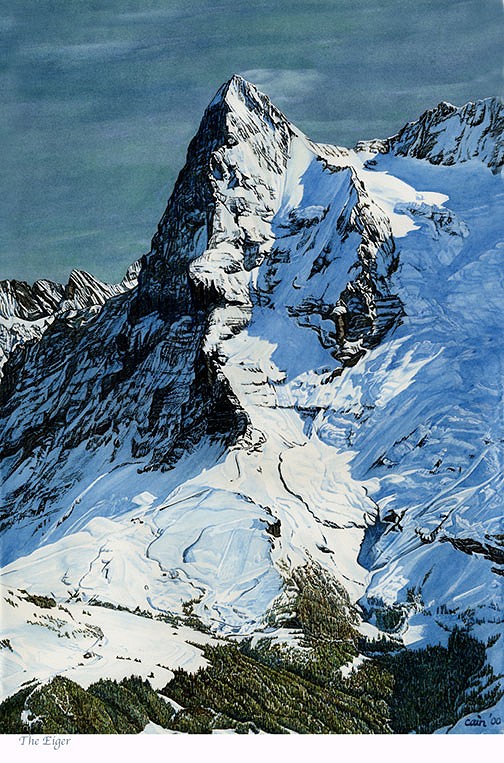
© Mountain Art - Llanberis |

© Mountain Art - Llanberis |

© Mountain Art - Llanberis |
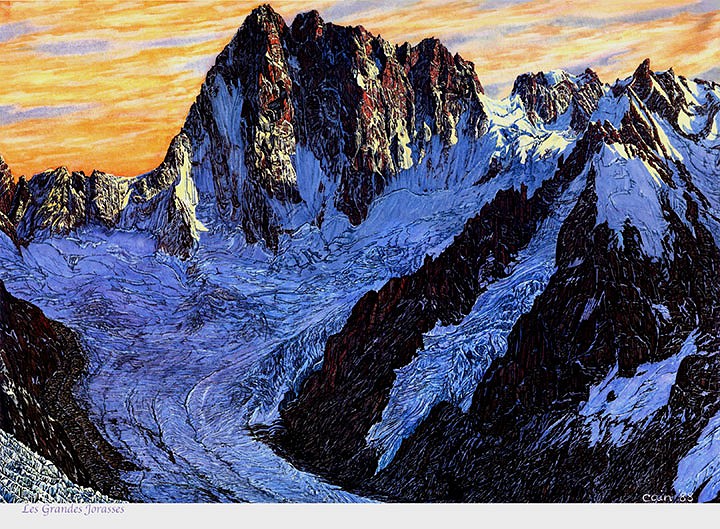
© Mountain Art - Llanberis |
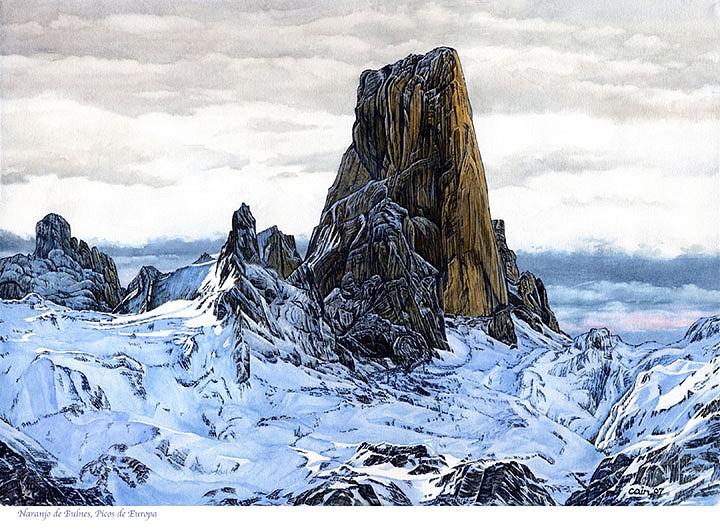
© Mountain Art - Llanberis |
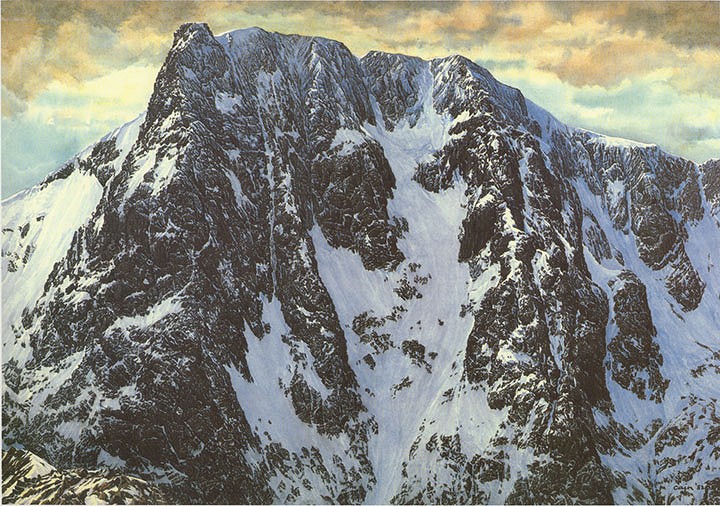
© Mountain Art - Llanberis |


Comments